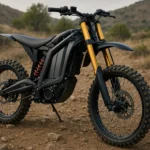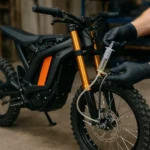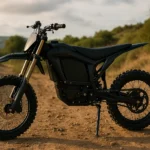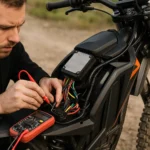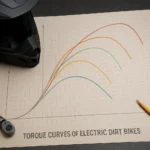How to convert a dirt bike to electric is more than just a trend — it’s the gateway to cleaner rides, fewer emissions, and total freedom from rising fuel costs. ⚡
Whether you’re a tinkering weekend warrior, a green-minded commuter, or just curious about giving your bike a second life, this guide is your electrified blueprint.
We’ll walk you through How to convert a dirt bike to electric from start to finish — no fluff, no overpriced kits, just real steps, honest advice, and gear that works. 🛠️💥
By the end, you’ll know exactly how to ditch your gas engine, pick the right electric motor, install a battery pack with proper range, and ride away like a boss.
This isn’t just a tutorial — it’s your first step toward joining the electric dirt bike movement. 🌱⚙️
Key Takeaways
- Step-by-step breakdown of how to convert a dirt bike to electric
- All core components you’ll need: motor, battery, controller, throttle, mounts
- Smart ways to choose the right e-bike conversion kit for your needs
- Budget tips and real DIY project timelines
- Legal and safety info every builder needs to know
- Pro tips from DIY riders who’ve already made the switch
What You’ll Learn Right Here
Want to electrify your bike? Use the quick jump links below to find what fits your needs 👇
What Does It Mean to Convert a Gas Bike to Electric?
If you’re wondering exactly how to convert a dirt bike to electric, it all starts with understanding what the process involves. In simple terms, you’ll be removing the internal combustion engine and replacing it with an electric drive system — typically made up of a motor, battery, controller, and throttle system ⚙️🔋.
Unlike buying a factory-made e-bike, this route gives you full control over performance, range, and style. It’s a hands-on way to repurpose an old gas bike and turn it into a smooth, silent, and zero-emissions machine 🌱. Many DIY riders choose this route not just for the savings, but for the satisfaction of building something with their own hands.
Learning how to convert a dirt bike to electric also means adapting to the world of wattage, voltage, amp-hours, and wiring — but don’t stress. You don’t need to be an electrical engineer to make it happen, just someone with a bit of patience and a willingness to learn.
As you go deeper into this guide, we’ll show you how to convert a dirt bike to electric the smart way — using tested kits or custom components depending on your budget, skill level, and performance goals. And trust us, the end result is 100% worth the grind 🛠️.
Before diving in, make sure your frame is solid, your suspension can handle the extra weight, and that you’re ready to tweak a few parts of your old ride to fit the new system. Converting to electric isn’t just about replacing parts — it’s about rethinking how your bike works from the ground up.
And if you’re still on the fence, here’s a tip: check out our complete guide to what an electric dirt bike really is — it’ll give you the big picture before you tear anything apart.
So yeah, how to convert a dirt bike to electric is a legit project — one that blends mechanical skills with eco-conscious upgrades. And by the time you’re done reading, you’ll have everything you need to make it happen 🚀.
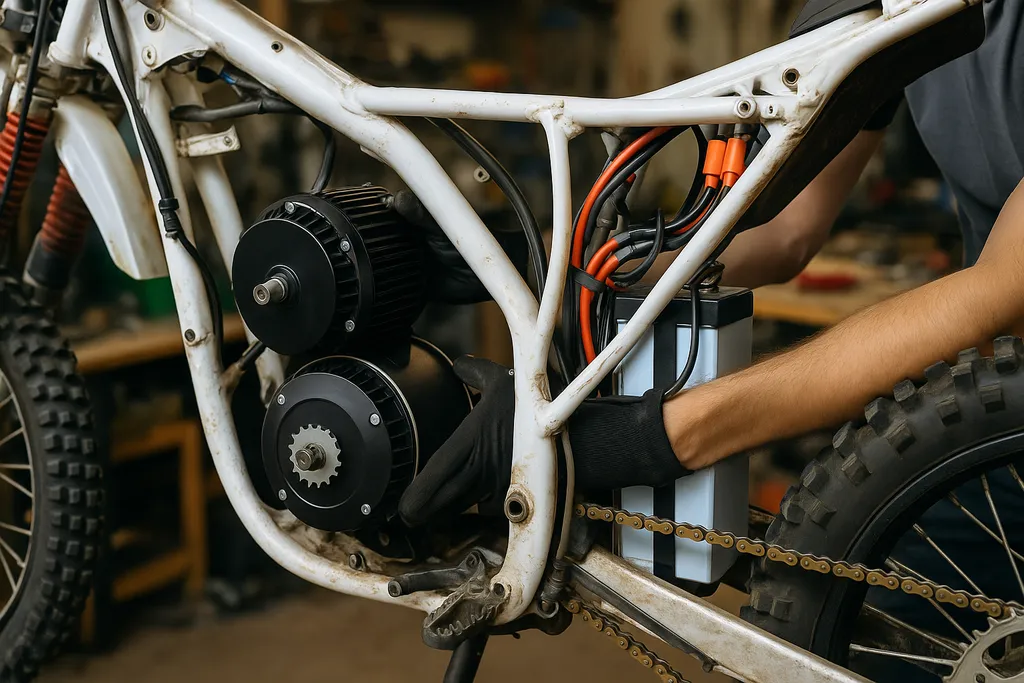
The 5 Essential Parts You’ll Need for the Conversion
To really master how to convert a dirt bike to electric, you need to get familiar with the five main components that bring your new ride to life. Without these, there’s no conversion — just a stripped bike and a dream 😅.
1. Electric Motor
This is the heart of your electric setup. Most riders choose between a hub motor (mounted in the wheel) or a mid-drive motor (mounted in the frame near the crank). Both have pros and cons:
- Hub motors are easier to install and cheaper
- Mid-drive motors offer better torque and balance for off-road use
When figuring out how to convert a dirt bike to electric, the type of motor you choose will shape your entire build ⚙️.
2. Battery
The battery determines your range and power. It’s one of the priciest components, but also one of the most important 🔋.
Look for these specs:
- Voltage (typically 36V, 48V, or 72V)
- Capacity (measured in amp-hours or Ah)
- Range expectations (20–60+ miles depending on setup)
Pro tip: go for lithium-ion batteries for lighter weight and longer lifespan. And always check if your frame has room for a secure battery mount!
3. Controller
The controller is the brain of your e-bike. It connects the battery, motor, and throttle — regulating how much power flows to the wheels at any given time.
You’ll need to match the controller’s voltage and current rating with your motor and battery. Don’t cheap out here — a poor controller can cause overheating or sudden cutoffs 😬.
4. Throttle and Display
Want that satisfying twist to go feeling? That’s your throttle. There are two main types:
- Thumb throttle – simpler and more compact
- Twist throttle – gives a motorcycle-like experience
Many setups also include an LCD display showing speed, battery level, power output, and ride modes. Not essential — but definitely useful 🚴♂️.
5. Mounts, Adapters, and Wiring
Often overlooked but absolutely necessary! To properly install your motor and battery, you’ll need:
- Mounting plates or custom brackets
- Sturdy wiring and connectors
- Zip ties, heat shrink tubing, and maybe even a drill 😅
Getting this part right means a cleaner, safer, and more durable conversion. Remember, how to convert a dirt bike to electric isn’t just about plugging things in — it’s about doing it right.
Getting all five of these components aligned is the key to a smooth build. In the next section, we’ll help you decide whether to go with a pre-built kit or build it all from scratch 💡.
Conversion Kits vs. Custom Builds: Which Route Should You Take?
When planning how to convert a dirt bike to electric, one of the first decisions you’ll face is whether to use a complete conversion kit or build everything from scratch. Each option has its perks — and pitfalls 🛠️💡.
Conversion kits are popular among beginners and those who want a quicker path to electrification. They usually include the motor, controller, throttle, and sometimes even the battery. If you value simplicity and speed, this might be your best bet.
On the other hand, custom builds give you full control. Want a 72V setup with a beastly mid-drive motor and a hidden battery pack? Go for it 😎. But be warned — this path often involves custom mounts, frame modifications, and a lot of troubleshooting.
Let’s break it down:
| Feature | Conversion Kit ✅ | Custom Build 🔧 |
|---|---|---|
| Installation Ease | Plug-and-play | Requires technical skills |
| Customization Level | Limited options | Maximum flexibility |
| Cost | More predictable | Can be cheaper or expensive |
| Time to Complete | Faster setup | Longer, more involved process |
| Learning Curve | Beginner-friendly | Ideal for tinkerers |
Choosing the right path depends on your budget, skills, and what kind of performance you expect. If your goal is to get up and riding ASAP, a kit might be the way. But if you’re chasing speed, torque, and a unique setup, a custom build gives you that creative edge ⚡.
Remember: whichever route you choose, you’re still learning how to convert a dirt bike to electric the right way — and that’s what matters most.
Budget Breakdown: How Much Does It Cost?
Let’s talk numbers — because understanding how to convert a dirt bike to electric also means knowing what kind of budget you’re working with 💸.
The total cost of your conversion will vary depending on the quality of parts, the complexity of your build, and whether you’re doing it all yourself or hiring help. Here’s a rough breakdown of typical DIY costs:
| Component | Low-End Cost | Mid-Range Cost | High-End Cost |
|---|---|---|---|
| Motor | $100 | $200–$400 | $500+ |
| Battery | $200 | $400–$600 | $800+ |
| Controller | $30 | $50–$100 | $150+ |
| Throttle/Display | $20 | $40–$70 | $100+ |
| Misc Wiring/Parts | $30 | $50–$100 | $150+ |
| Total Estimate | ~$380 | ~$750–$1,300 | $1,700+ |
If you’re going with a conversion kit, expect to spend anywhere from $500 to $1,000, depending on motor power and battery size. Some kits come without a battery, so check carefully before buying ⚠️.
For a custom build, costs can balloon quickly — especially if you choose premium parts or need to modify your frame. Still, for many riders, the flexibility and raw power make it worth every cent 🔧.
Keep in mind that used parts can dramatically lower costs, and many DIYers find great deals on local marketplaces or forums. Just make sure the components are compatible and not too worn out.
So, how to convert a dirt bike to electric on a budget? Start with clear priorities. Decide what matters more: speed, range, or price. And don’t forget to factor in tools, shipping, and any potential custom fabrication you might need 🔩.
Up next, we’ll walk through the entire conversion process — step by step — so you can plan not just your budget, but your timeline too 🛠️.
Step-by-Step Guide: How to Convert a Dirt Bike to Electric
Now that you’ve got the parts and budget in mind, it’s time to roll up your sleeves. This is where how to convert a dirt bike to electric becomes real — step by step, wrench by wrench 🛠️.
Whether you’re using a kit or going full custom, this process covers the key stages for most builds.
Step 1: Remove the Gas Engine
Begin by stripping your bike of its gas components. This includes the fuel tank, exhaust, engine, and carburetor. Keep bolts and brackets you might reuse. Make sure the frame is clean and free of oil or grease.
This is a big milestone — your gas bike is officially going electric 🔧.
Step 2: Install the Electric Motor
Position the motor depending on your build type:
- Hub motors go inside the rear or front wheel
- Mid-drive motors mount near the crank area
Secure it with the appropriate brackets. Ensure chain alignment (if required) and clearance for suspension and brake systems. Precision here avoids future headaches 🧠.
Step 3: Mount the Battery Pack
Next, attach the battery to a solid part of the frame. Common spots include:
- The downtube (for a clean look)
- A rear rack or saddle bag
- Inside a custom enclosure
Use metal straps or custom mounts to keep it stable during rides. Batteries must be well-ventilated and protected from water or debris 🔋.
Step 4: Connect the Controller and Wiring
Wire the controller to the motor, throttle, and battery. Double-check voltage compatibility and connector types. Most kits use color-coded wires, but custom setups may require a wiring diagram.
Take your time with this step — it’s where many first-time builders get stuck. Secure everything with zip ties and avoid loose cables that can snag while riding 🔌.
If you’re looking for a great visual aid, check out this excellent ElectricBike.com wiring diagram for a basic setup.
Step 5: Install the Throttle and Display
Mount your throttle on the handlebar. If your system includes a display, install it near the throttle or stem. Make sure wiring doesn’t interfere with brake levers or gear shifters.
Calibrate the system if your controller requires it. This might involve a brief learning curve, but it’s a one-time step that ensures everything works smoothly.
Step 6: Test the System
Before your first ride, double-check every bolt, wire, and connection. Put the bike on a stand and test the throttle with the wheel off the ground. Listen for strange noises and monitor motor response.
Once it passes the garage test, take it for a low-speed spin and gradually test throttle, braking, and responsiveness. You just completed how to convert a dirt bike to electric from start to finish 🔋⚡.
Next, we’ll go over common mistakes — so you can avoid issues before they ruin your ride.
Common Mistakes to Avoid During the Conversion
Learning how to convert a dirt bike to electric isn’t just about following the steps — it’s also about dodging the traps that many DIY builders fall into. Avoiding these mistakes can save you time, money, and even your safety 🔧.
Skipping the Frame Inspection
Before installing anything, make sure your bike frame is structurally sound. Converting to electric often adds weight and torque. If the frame has cracks, rust, or fatigue, you could be risking more than just a failed build 😬.
Using Mismatched Components
Mixing a 72V battery with a 48V motor? That’s a fast track to damaging your gear. Always check that your motor, controller, and battery are voltage-compatible. It’s a crucial detail when figuring out how to convert a dirt bike to electric properly.
Poor Battery Mounting
Don’t just strap the battery on with zip ties and hope for the best. A loose battery can rattle, short-circuit, or even fall mid-ride. Secure it with proper brackets or mounts designed to handle road vibration and movement 🔋.
Overpowering Your Setup
It’s tempting to go big with a high-watt motor, but your frame and brakes need to handle it. A 3000W motor on a lightweight dirt bike without proper reinforcement? Not a good idea. Go for balance, not brute force ⚠️.
Ignoring Local Laws
You might be thrilled about your new electric ride, but is it street legal? Some regions require registration, insurance, or even a license depending on the power and speed of the build. Don’t skip the legal homework — it’s part of doing how to convert a dirt bike to electric the right way 📋.
Forgetting Safety Features
Adding a fuse, a kill switch, and checking all connectors for waterproofing are basic safety steps that many skip. These details can prevent serious issues — especially if you ride in wet or rough conditions 🌧️.
Avoiding these common errors will make your project smoother and way more rewarding. In the next section, we’ll cover everything you need to know to stay on the right side of the law.
Legal Stuff: Is Your Converted Bike Street Legal?
After finishing your build, it’s tempting to hit the streets right away — but not so fast. Knowing how to convert a dirt bike to electric also means understanding the legal responsibilities that come with riding it 🚦.
Electric bike laws vary by country, state, and even city. What’s legal in one place could get you a fine in another. In the U.S., the main factors that determine legality are motor power, top speed, and whether your e-bike has pedals.
Here’s a general rule of thumb:
- If your bike has a motor under 750 watts and goes no faster than 20 mph without pedaling, it’s usually considered a Class 2 e-bike and might not need a license or registration.
- If it exceeds those limits, it may be classified as a moped or motorcycle, which often requires a driver’s license, insurance, and registration 📋.
It’s your responsibility to check with your local DMV or transportation office before riding your converted bike on public roads. Riding without proper documentation could result in penalties — or worse, having your bike impounded.
Also, some places require:
- Front and rear lights
- A working horn or bell
- Reflectors
- DOT-approved helmets
- Disc brakes or upgraded stopping systems
These requirements often apply even if you’re riding on trails or bike paths. So make sure your bike isn’t just fast and fun, but also compliant and safe.
Want to go deeper on e-bike classifications? The U.S. Department of Transportation’s e-bike resources has detailed insights you can trust.
Being aware of legal expectations is an essential part of doing how to convert a dirt bike to electric the right way. Next, let’s hear from riders who’ve already done it and what they’ve learned along the way.
Real-World Examples from DIY Riders
One of the best ways to learn how to convert a dirt bike to electric is by hearing from people who’ve already done it. These riders started with old gas bikes and turned them into smooth, silent electric machines — each with their own twist 🔧.
Lucas – 19, Trail Rider from Oregon
“I converted my 125cc dirt bike using a 3000W hub motor and a 60V battery. I ride mostly off-road, and this thing has serious torque. The hardest part? Wiring the controller. I ended up watching tutorials for two nights straight 😅. Worth it!”
Brianna – 33, Commuter in Austin
“I wanted a daily ride without relying on gas. Found a used conversion kit online and installed it on my old scooter frame. Took me a week to finish. I love that I can charge it at work and skip the gas station entirely ⚡.”
Marcus – 26, Urban DIYer in Detroit
“Built mine with spare parts. No kit. Just a 1000W mid-drive motor, a custom battery pack, and a whole lot of trial and error. My advice? Test everything before mounting. It’ll save you hours of rework 🔋.”
These stories show that there’s no one-size-fits-all approach when it comes to how to convert a dirt bike to electric. Each project is unique — shaped by your budget, goals, and creativity.
What they all share in common? That awesome first ride when everything finally works and you feel the electric power kick in. Up next, let’s clear up the most common questions new builders ask before starting.
FAQs About Converting Gas Bikes to Electric
When researching how to convert a dirt bike to electric, it’s normal to run into a few big questions. Below, we’ve answered the most common ones that DIY riders ask before and during their first conversion project 🤔.
Can I convert any gas dirt bike to electric?
Not every bike is a good candidate. You’ll need a solid frame, enough space to mount the motor and battery, and reliable suspension and brakes. Lightweight pit bikes, scooters, or older dirt bikes are often easier to convert than full-sized motorcycles.
Is converting cheaper than buying a new electric bike?
It depends. If you already have a suitable bike and some tools, converting can cost less than buying a brand-new electric dirt bike. But keep in mind that buying a pre-built model gives you a tested system with a warranty — and zero setup time.
How long does the conversion take?
For most people doing this at home, the process takes 10 to 20 hours over several days. If it’s your first time learning how to convert a dirt bike to electric, give yourself extra time to troubleshoot, test, and redo a few steps along the way.
Will my converted bike be waterproof?
No conversion is fully waterproof unless you take steps to seal the battery box, connectors, and controller. Use silicone sealant, shrink tubing, and waterproof enclosures to keep your components safe from rain or splashes 🌧️.
What’s the best motor size for a beginner?
A 1000W motor is a solid starting point. It’s powerful enough for fun riding, light commuting, and even trail use — but not so aggressive that it becomes hard to manage. As you gain experience, you can always upgrade to higher wattage systems.
Do I need a license for my electric conversion?
Only if your converted bike exceeds local speed or power limits. In many states, under-750W bikes with a 20 mph top speed don’t require a license. Anything above that may be treated like a moped or motorcycle, depending on the laws where you live.
Answering these questions helps take the mystery out of how to convert a dirt bike to electric, making the whole process feel more doable — even if it’s your first time.
Share Your Ride: Inspire Others to Go Electric
You’ve made it to the end of this electrifying journey — and now you know exactly how to convert a dirt bike to electric. But your transformation doesn’t have to stop here. In fact, it’s just the beginning ⚡.
If you’ve completed your build (or even if you’re still in progress), we’d love to see what you’re working on. Share your bike conversion story, show off your setup, or drop a photo of your first ride. Your experience could inspire someone else to ditch gas and embrace a cleaner ride 🚴♂️.
Tag us on social media or leave a comment below telling us:
- What bike you converted
- What kit or components you used
- What challenges you faced
- Your favorite part of the build process
Don’t forget — the Electric Dirt Zone community is all about support, learning, and pushing the boundaries of what’s possible with electric mobility.
Still curious about how electric dirt bikes work, how they’re built, or what they can really do? Head back to our complete guide to what an electric dirt bike is for a deeper dive into the world you’ve just joined.
Now go ride, test, tweak — and tell the world your gas days are officially over 🔋⚙️🌍.

Tyler Brooks is the storyteller behind most of the content at Electric Dirt Zone. With over 10 years of experience in digital media and a lifelong love for off-road riding, he blends technical insight from the team with engaging, down-to-earth writing. When he’s not turning dusty trail rides into blog posts, you’ll probably find him snapping pics before things get too wild.


